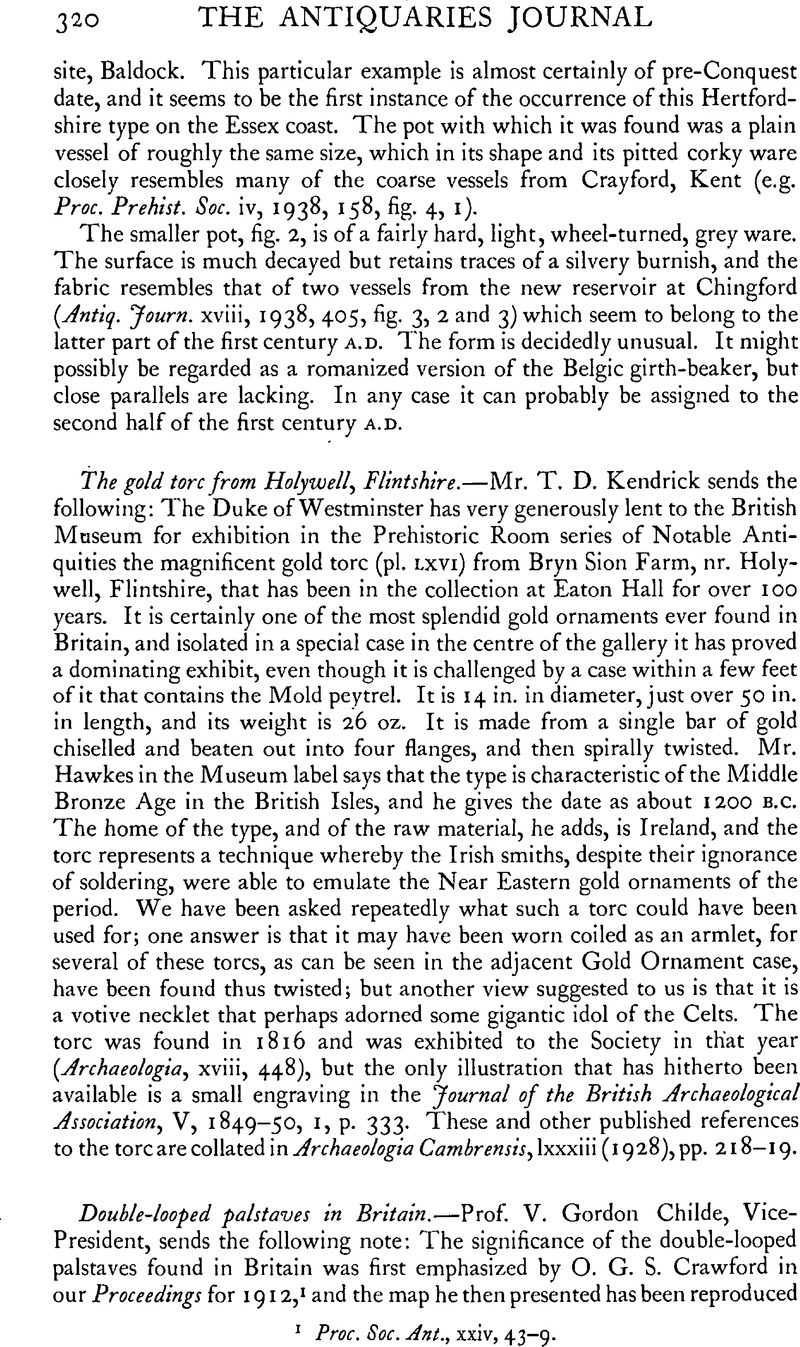No CrossRef data available.
Article contents
Double-looped palstaves in Britain
Published online by Cambridge University Press: 08 January 2012
Abstract

- Type
- Notes
- Information
- Copyright
- Copyright © The Society of Antiquaries of London 1939
References
page 320 note 1 Proc. Soc. Ant., xxiv, 43–9.
page 321 note 1 Antiq. Journ. xvii, 63–8.
page 321 note 2 B. M., Bronze Age Guide, 1920, 155Google Scholar.
page 321 note 3 Proc. Soc. Ant., xxxi, 158.
page 321 note 4 Publicaciones de la Faculdad de Filosofía y Letras, Universidad de Santiago, ii, 1927=Bol. R. A cad. Gallega, 1927.
page 321 note 5 Monumenti Antichi, xxvii, 14 ff.
page 321 note 6 Ibid.
page 321 note 7 L'Anthr. xvi (1905), 167Google Scholar Seine at Vallée au Bac.
page 321 note 8 Deynze, Musées du Cinquanténaire.
page 321 note 9 Z.F.E., xxxvii (1905), 796 (Wildeshausen).
page 321 note 10 I have to thank Dr. N. Niklassen for the details; the palstave is, he tells me, published by Nordén, A., Östergötiands Bronsålder (1925), 18Google Scholar—a book not available to me.
page 322 note 1 In Belem Museum I noted three specimens from between Douro and Minho.
page 322 note 2 Wheeler, Prehistoric and Roman Wales, p. 145, fig. 48.
page 323 note 1 Antiq. Journ. v, 51 f.
page 323 note 2 Frödin and Persson, Asine—the Swedish Excavations 1922–30, Stockholm, 1938, 311Google Scholar.
page 323 note 3 Ebert's Reallexikon der Vorgeschichte, xii, 70; Merhardt, Bronzezeit am Jenissei, passim.
page 323 note 4 In addition to a considerable number of normal single-looped palstaves from Portugal the Belem Museum possesses several ‘half palstaves’—apparently cast in one half of a two-piece mould, the other half of which was missing so that the upper face of the casting has been left flat like either face of a flat axe! Miss L. Chitty describes similar single-faced palstaves from Ireland in P.P.S. ii (1936), 236Google Scholar.




